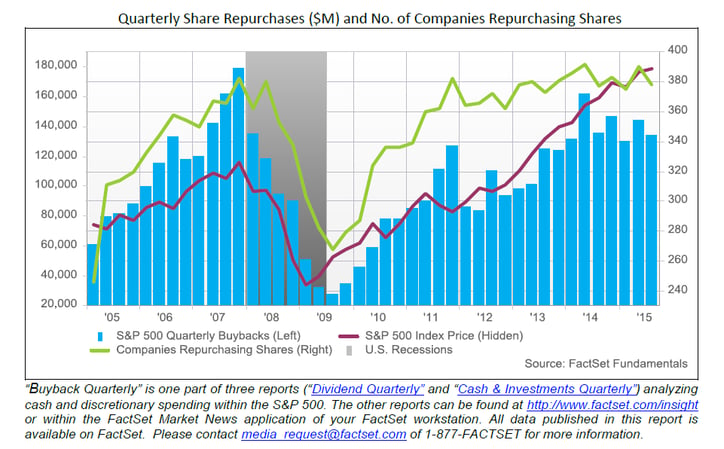
There are hundreds of business acumen lessons learned by participants in a well-designed and executed learning journey. How to understand strategy, financial management, managing the supply chain, forecasting, and capital budgeting are just a few of the big ones.
In our learning journeys, participants have the opportunity to learn-by-doing by running their own simulated companies and experiencing what it’s like to set and execute a strategy in a competitive marketplace. One of the many decisions participants have the opportunity to make is a stock buyback for their simulated company.
During the various business simulation workshops that we conduct, the question of the stock buyback often comes up and our facilitators take a few moments to talk about the positives and negatives of the stock buy-back. I am going to take some time in this blog to share some research and perspectives on the topic of the stock buyback as a business acumen learning lesson.
This discussion starts with some current data. I use a great resource called FactSet to track and understand what is happening in the corporate finance world so that we can calibrate our models and simulation base conditions. The chart below clearly illustrates several significant trends in the area of company stock buybacks.

As you can see, the green line represents companies repurchasing their own shares. Since the 2008 financial crisis, corporate buybacks have been climbing steadily. Hundreds of billions of dollars in capital is being used for the buybacks and the primary reason is that a buyback mathematically increases corporate earnings even if the earnings don’t change. Typically, Wall Street analysts track corporate earnings using the metric called Earnings per Share (EPS). EPS is defined as Net Income (also called Net Profit) divided by the total number of outstanding shares of stock. If you reduce the total number of outstanding shares of stock, you artificially increase the EPS.
While there is a positive in terms of increased EPS, there is also a big negative issue as well; every dollar being spent on a short-term decision like the buyback is a dollar not being spent on long term investments in the business. In other words, the company is making a decision to provide immediate benefits to the shareholders and not investing in R&D, Marketing, Sales, or any other function of the business that may result in long-term growth and shareholder value. Think about this; in the last quarter alone, companies took over $170 million of their own valuable cash and bought back their own stock instead of investing it in their businesses.
As we come to the close of 2015, corporate cash levels are at record highs. According an article in The Wall Street Journal on November 30, 2015, non-financial US companies are holding more than $1.4 trillion in cash. There are 11 companies – including Apple – who are holding more than twice the amount of their revenues in cash. There are many reasons for this including strong execution of strategy and business results, conservative spending, “cheap” (low interest rate) money, and a lack of new and innovative opportunities. There is also a negative reason; much of this cash is held by US companies in outside markets and can’t be brought back into the US without significant tax penalties so these companies leave it there and use it for local spending. With so much cash and such limited spending, many companies think it’s smart to use some of the cash to repurchase their own stock. In these situations, it is probably the right choice.
When I am asked about the idea of stock buybacks in a simulation workshop, I typically ask the executive leadership team of the simulated company the following five questions:
- Have you fully and successfully executed your strategy?
- Is there anything else that you should spend cash on to enhance to customer value proposition?
- Have you overachieved your business goals and objectives by at least 10% in each category?
- Do you have enough cash to make the investments needed for the next three years?
- Is your stock price fairly reflecting your current achievements and competitive position?
- If the answer to all of them is an overwhelming “yes,” then I am comfortable with the stock buyback.
Comments and questions always welcome!




